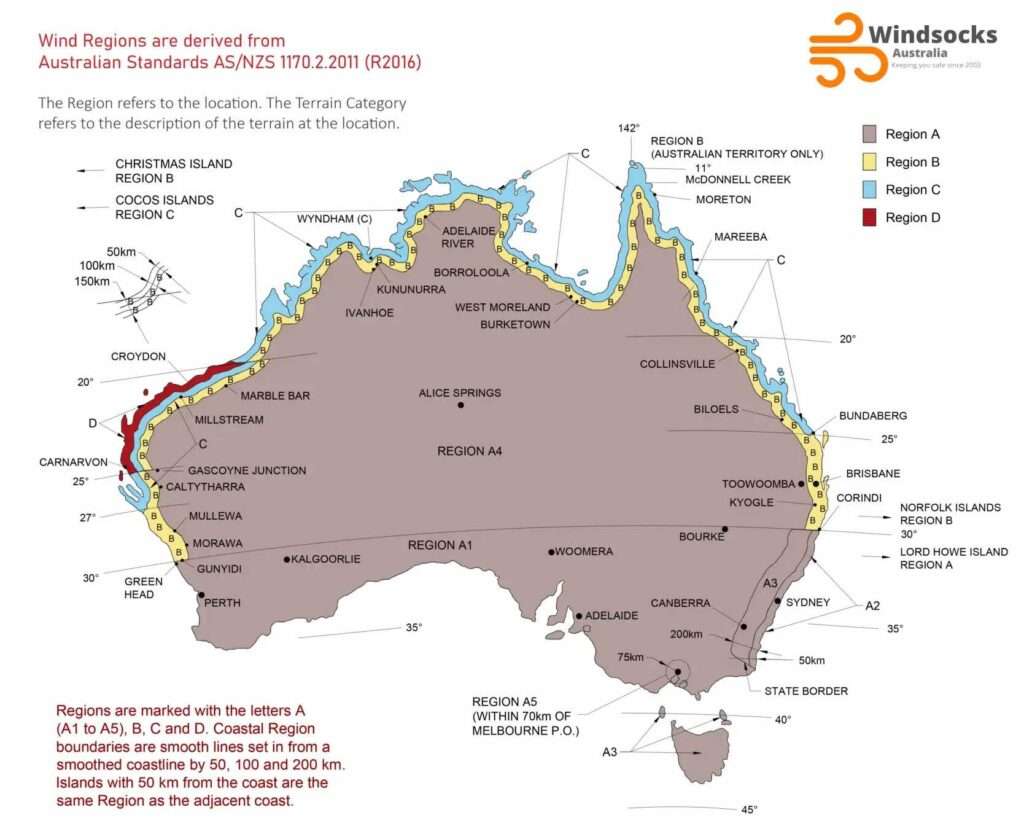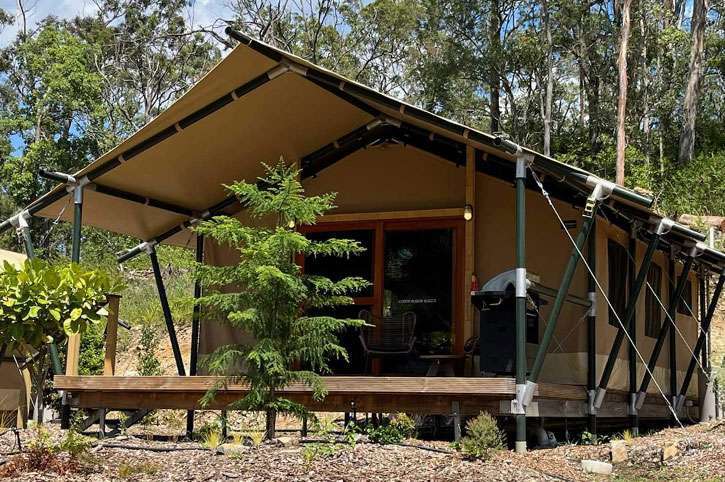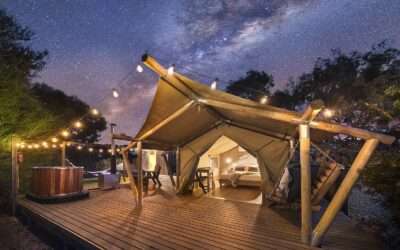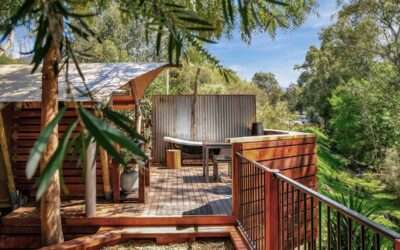Australia’s vast and varied landscapes present unique engineering challenges, especially when it comes to outdoor living spaces like glamping tents and decks. In compliance with the National Construction Code (NCC), our designs meticulously account for the distinct wind regions and terrain categories across the country, ensuring every structure is perfectly poised to withstand local wind conditions. Here’s how these critical factors shape your glamping adventure with us.
Wind Regions
Our continent is divided into four wind regions: A, B, C, and D, ascending from the mildest to the most severe wind conditions. This categorisation is crucial for designing structures that can endure the specific wind speeds of their locations. For a glamping setup in the tumultuous Region C, for instance, we employ stronger anchoring and more resilient materials compared to a setup in the gentler Region A, guaranteeing both your safety and comfort.

Terrain Categories
The terrain category considers how the land’s nature influences wind flow around a structure, categorised from 1 (open, flat land) to 4 (land with many obstructions, such as trees or buildings). This understanding directs our design strategy, ensuring that a tent on an open Category 1 site is fortified against the wind, while a setup in a sheltered Category 4 area can be designed with lighter construction without compromising safety.
Prioritising Comfort and Safety in Design
In crafting our glamping tents and decks, the knowledge of wind regions and terrain categories informs our choice of materials, structural design, and anchoring systems. This ensures every structure not only stands firm against the wind but also offers the ultimate comfort and safety.

Customised Construction for Every Site
By integrating detailed knowledge of Australia’s wind regions and terrain categories into our construction practices, we create harmonious, secure, and comfortable outdoor experiences.





